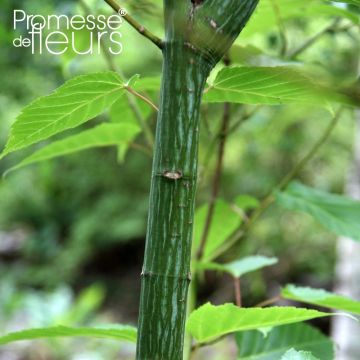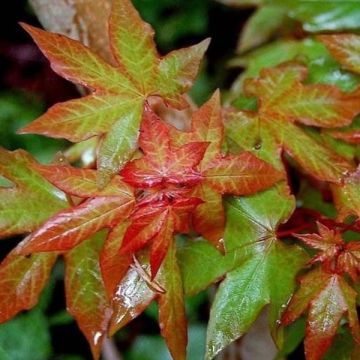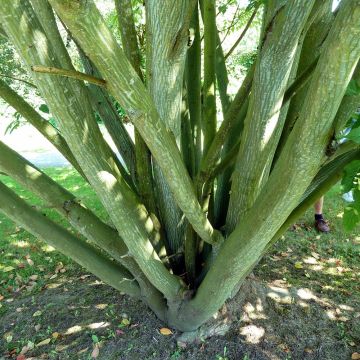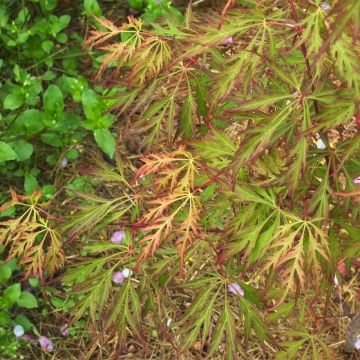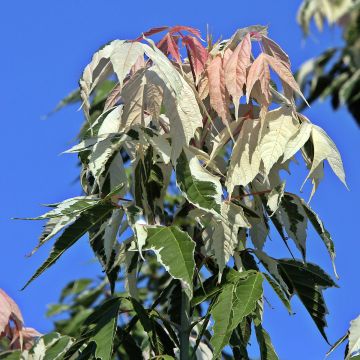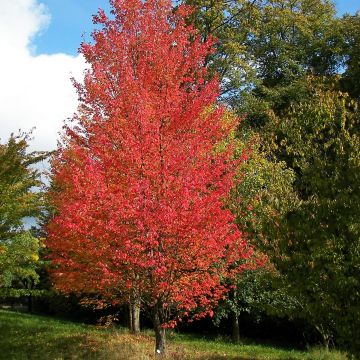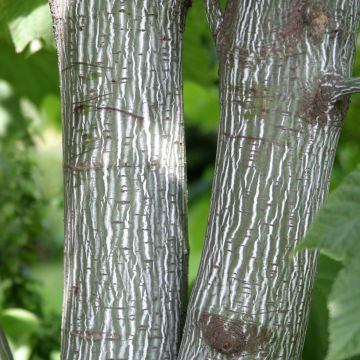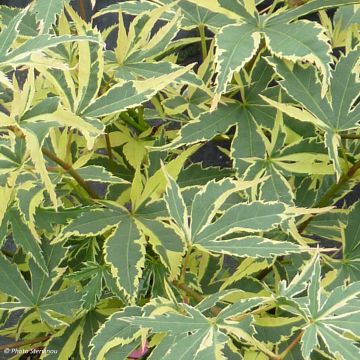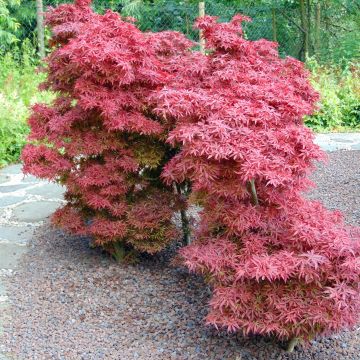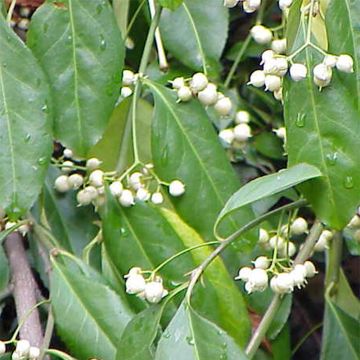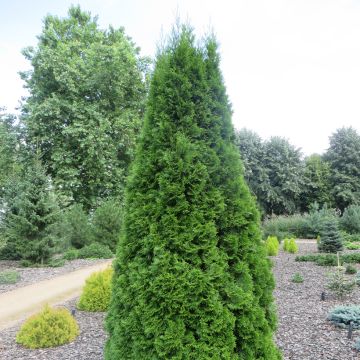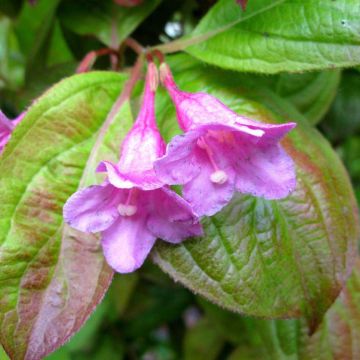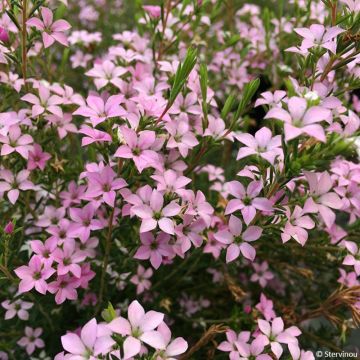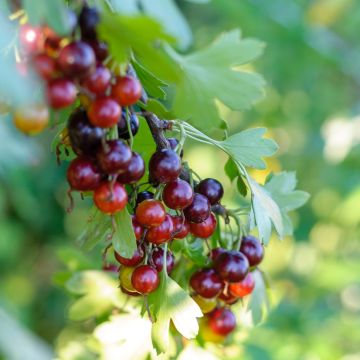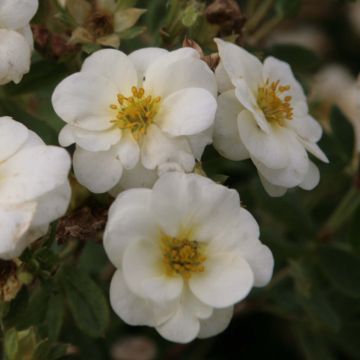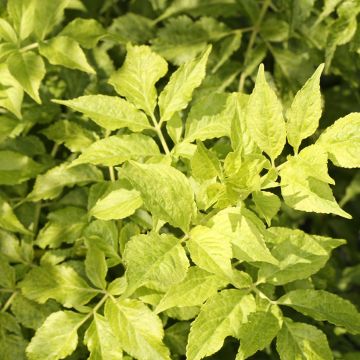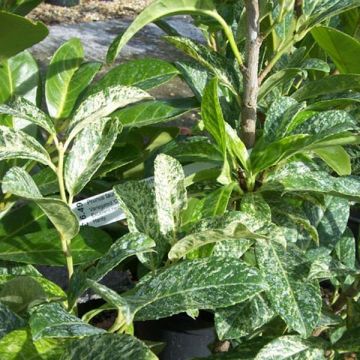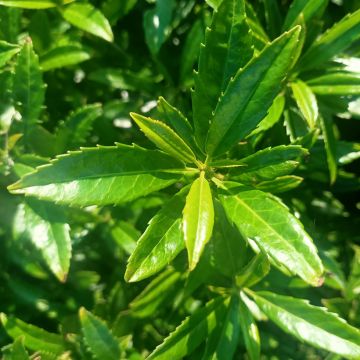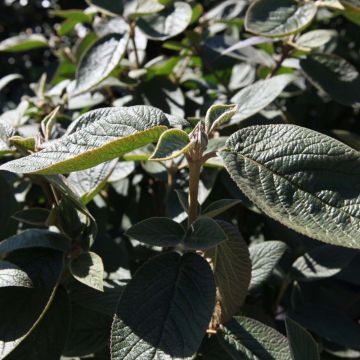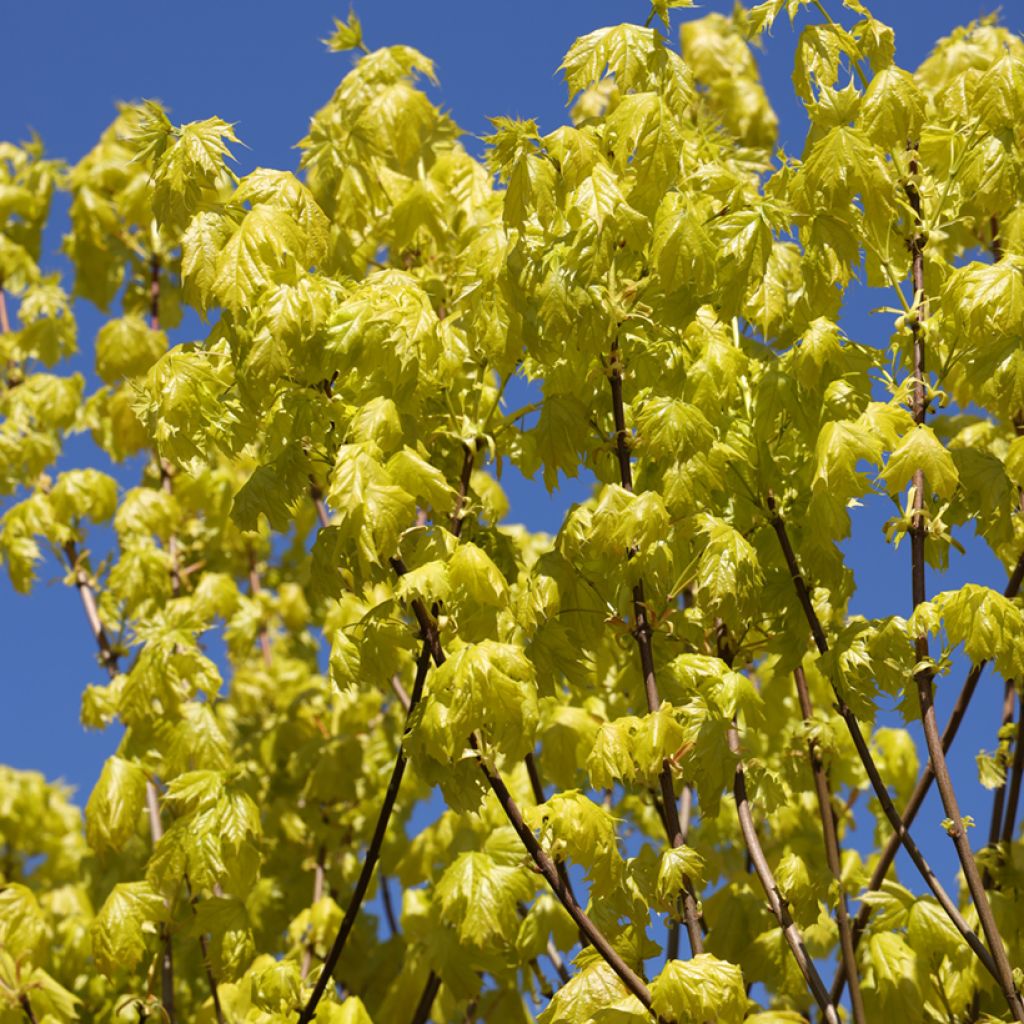

Acer platanoides Princeton Gold - Norway Maple
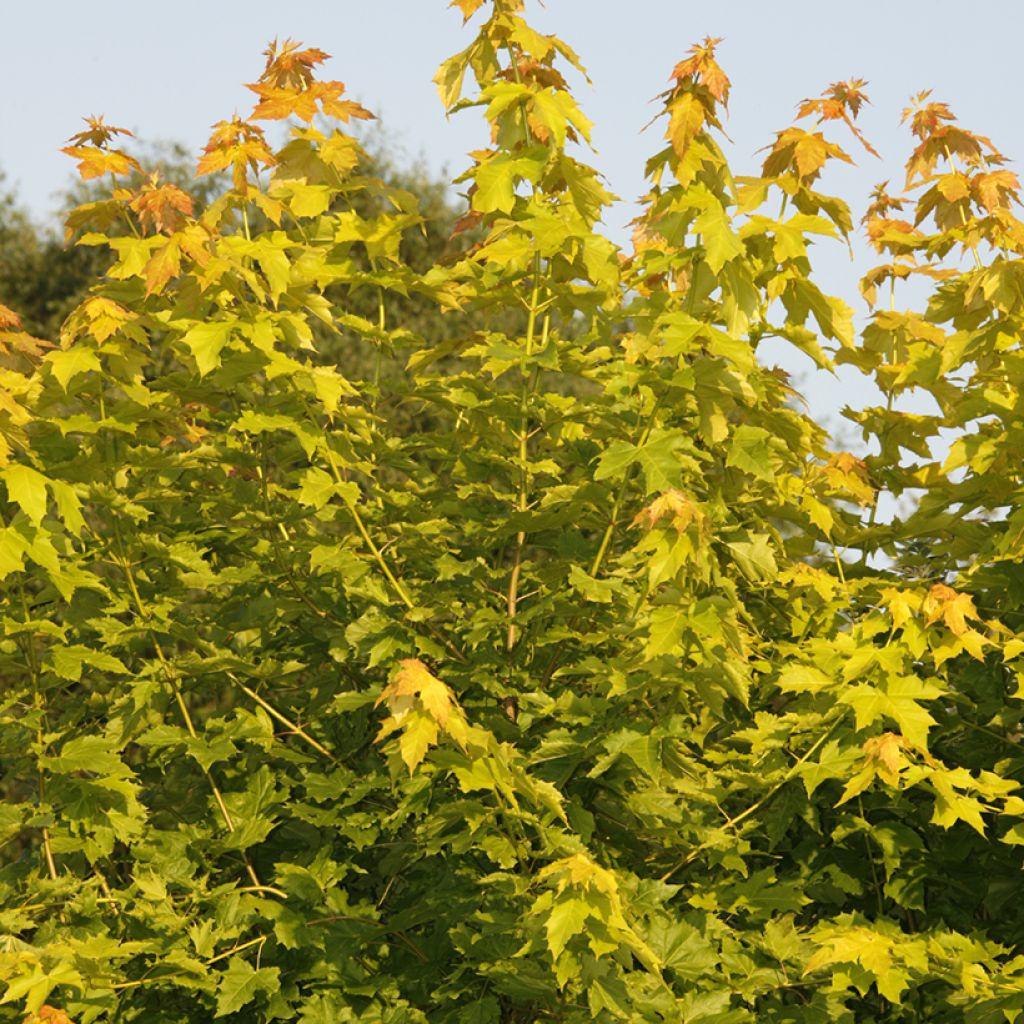

Acer platanoides Princeton Gold - Norway Maple
Acer platanoides Princeton Gold - Norway Maple
Acer platanoides 'Prigo' PRINCETON GOLD
Norway Maple, European Maple, Plane Tree Maple
This item cannot be shipped to the selected country
Oversize package delivery charge from €6.90
Delivery to Corse prohibited
More information
Schedule delivery date,
and select date in basket
This plant carries a 24 months recovery warranty
More information
We guarantee the quality of our plants for a full growing cycle, and will replace at our expense any plant that fails to recover under normal climatic and planting conditions.
Oversize package: home delivery by special carrier from €6.90 per order..
Express home delivery from €8.90.
Delivery to Corse prohibited: UE law prohibits the import of this plant from mainland France to Corse as part of the fight against Xylella fastidiosa. Please accept our sincere apologies.
More information
Does this plant fit my garden?
Set up your Plantfit profile →
Description
Acer platanoides Princeton Gold 'Prigo' is a variety of the Norway Maple with distinctly yellow and bright foliage. The medium-sized tree with fast growth develops an upright and columnar habit in its early years before rounding out with age, with a densely branched crown. In spring, the leaves are golden yellow, lightening to chartreuse in summer. In autumn, the colouration depends on the soil: from banana yellow to dark yellow, with shades of orange and red. The yellow leaves of this variety, a true visual spectacle, withstand full sun perfectly. The undemanding Norway Maple requires a soil deep enough to accommodate its powerful root system.
Native to the Caucasus, widespread in Europe, from Scandinavia to Spain and east to Russia, Acer platanoides is a large deciduous tree with fast growth, often associated with oak, lime, and elm in upland forests. It can live up to 200 years. The cultivar 'Prigo' was discovered and selected by American botanist and breeder William Flemmer III, who, in the early 1980s, collected street tree seeds and grew them in his trial plots in anticipation of a mutation. The breakthrough came around 1983 when a seedling showed extremely yellow foliage that did not suffer from sun scorch, and the plant proved vigorous and healthy enough to be considered a new variety. It has an upright habit and its beautiful oval crown rounds out with age. At maturity, this single-stemmed tree reaches 10 to 15 m in height and 7 to 10 m in spread. Its foliage is deciduous. The leaves are opposite, palmate, 10 to 20 cm long, with 5 to 7 very pointed, toothed lobes. The leaves, carried on long petioles, are smooth and glossy. They appear bright yellow in spring and turn chartreuse in summer. In autumn, the tree can offer two different spectacles: if grown in ordinary (neutral to alkaline) soil, as the green pigment disappears, the leaves reveal an even lighter shade of banana yellow that contrasts perfectly with the brown veins and petioles. If grown in very acidic soil, the leaves take on various shades of gold, amber-orange, and scarlet red. The inconspicuous flowering, in the form of erect corymbs of tiny yellow-green flowers, occurs before bud burst, in March, on subjects aged 15 to 20 years. It is followed, in June, by 3 to 5cm long, winged fruits called samaras. The bark of this tree is brown, almost smooth and marked with numerous shallow longitudinal cracks.
Acer platanoides Princeton Gold 'Prigo' is an easy-to-grow tree. Unlike many light-coloured cultivars, it is not very drought-sensitive. It is content with ordinary soil, provided it is deep and well-drained, and it dislikes stagnant moisture. It looks spectacular as a standalone specimen in the middle of a large garden or park, for example. It can also be used as a street tree to border large avenues, or as a windbreak planted along the boundaries of a large garden. For contrast, it can be planted in a grove with a variety with purple foliage, such as the 'Crimson King' Norway Maple, purple beech, or 'Forest Pansy' Eastern Redbud, for example.
Report an error about the product description
Plant habit
Flowering
Foliage
Botanical data
Acer
platanoides
'Prigo' PRINCETON GOLD
Sapindaceae
Norway Maple, European Maple, Plane Tree Maple
Cultivar or hybrid
Other Acer - Maple tree
Planting and care
Acer platanoides Princeton Gold 'Prigo' should be planted in spring or autumn in any fertile, deep, and moist soil in a sunny, but not scorching, or semi-shaded location. It tolerates the presence of limestone in the soil but requires a soil deep enough to accommodate its powerful root system. Be cautious of strong winds. Keep the soil moist during the first two summers after planting. Mulching can be beneficial to maintain soil moisture. Training pruning is necessary for young plants, and then every 3 years to balance the branches and maintain a harmonious habit. Do not prune after December as the sap rises very early.
Planting period
Intended location
Care
This item has not been reviewed yet - be the first to leave a review about it.
Hedge shrubs
Haven't found what you were looking for?
Hardiness is the lowest winter temperature a plant can endure without suffering serious damage or even dying. However, hardiness is affected by location (a sheltered area, such as a patio), protection (winter cover) and soil type (hardiness is improved by well-drained soil).

Photo Sharing Terms & Conditions
In order to encourage gardeners to interact and share their experiences, Promesse de fleurs offers various media enabling content to be uploaded onto its Site - in particular via the ‘Photo sharing’ module.
The User agrees to refrain from:
- Posting any content that is illegal, prejudicial, insulting, racist, inciteful to hatred, revisionist, contrary to public decency, that infringes on privacy or on the privacy rights of third parties, in particular the publicity rights of persons and goods, intellectual property rights, or the right to privacy.
- Submitting content on behalf of a third party;
- Impersonate the identity of a third party and/or publish any personal information about a third party;
In general, the User undertakes to refrain from any unethical behaviour.
All Content (in particular text, comments, files, images, photos, videos, creative works, etc.), which may be subject to property or intellectual property rights, image or other private rights, shall remain the property of the User, subject to the limited rights granted by the terms of the licence granted by Promesse de fleurs as stated below. Users are at liberty to publish or not to publish such Content on the Site, notably via the ‘Photo Sharing’ facility, and accept that this Content shall be made public and freely accessible, notably on the Internet.
Users further acknowledge, undertake to have ,and guarantee that they hold all necessary rights and permissions to publish such material on the Site, in particular with regard to the legislation in force pertaining to any privacy, property, intellectual property, image, or contractual rights, or rights of any other nature. By publishing such Content on the Site, Users acknowledge accepting full liability as publishers of the Content within the meaning of the law, and grant Promesse de fleurs, free of charge, an inclusive, worldwide licence for the said Content for the entire duration of its publication, including all reproduction, representation, up/downloading, displaying, performing, transmission, and storage rights.
Users also grant permission for their name to be linked to the Content and accept that this link may not always be made available.
By engaging in posting material, Users consent to their Content becoming automatically accessible on the Internet, in particular on other sites and/or blogs and/or web pages of the Promesse de fleurs site, including in particular social pages and the Promesse de fleurs catalogue.
Users may secure the removal of entrusted content free of charge by issuing a simple request via our contact form.
The flowering period indicated on our website applies to countries and regions located in USDA zone 8 (France, the United Kingdom, Ireland, the Netherlands, etc.)
It will vary according to where you live:
- In zones 9 to 10 (Italy, Spain, Greece, etc.), flowering will occur about 2 to 4 weeks earlier.
- In zones 6 to 7 (Germany, Poland, Slovenia, and lower mountainous regions), flowering will be delayed by 2 to 3 weeks.
- In zone 5 (Central Europe, Scandinavia), blooming will be delayed by 3 to 5 weeks.
In temperate climates, pruning of spring-flowering shrubs (forsythia, spireas, etc.) should be done just after flowering.
Pruning of summer-flowering shrubs (Indian Lilac, Perovskia, etc.) can be done in winter or spring.
In cold regions as well as with frost-sensitive plants, avoid pruning too early when severe frosts may still occur.
The planting period indicated on our website applies to countries and regions located in USDA zone 8 (France, United Kingdom, Ireland, Netherlands).
It will vary according to where you live:
- In Mediterranean zones (Marseille, Madrid, Milan, etc.), autumn and winter are the best planting periods.
- In continental zones (Strasbourg, Munich, Vienna, etc.), delay planting by 2 to 3 weeks in spring and bring it forward by 2 to 4 weeks in autumn.
- In mountainous regions (the Alps, Pyrenees, Carpathians, etc.), it is best to plant in late spring (May-June) or late summer (August-September).
The harvesting period indicated on our website applies to countries and regions in USDA zone 8 (France, England, Ireland, the Netherlands).
In colder areas (Scandinavia, Poland, Austria...) fruit and vegetable harvests are likely to be delayed by 3-4 weeks.
In warmer areas (Italy, Spain, Greece, etc.), harvesting will probably take place earlier, depending on weather conditions.
The sowing periods indicated on our website apply to countries and regions within USDA Zone 8 (France, UK, Ireland, Netherlands).
In colder areas (Scandinavia, Poland, Austria...), delay any outdoor sowing by 3-4 weeks, or sow under glass.
In warmer climes (Italy, Spain, Greece, etc.), bring outdoor sowing forward by a few weeks.

































